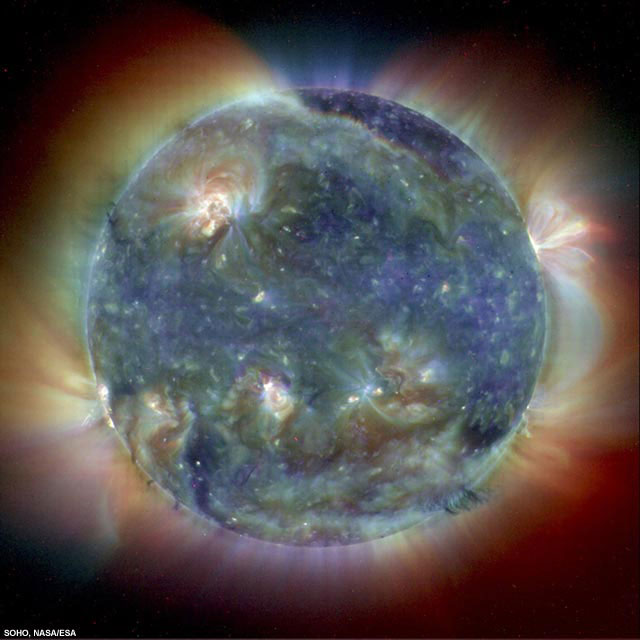Sun's Wayward Twin Discovered

Somewhereout there, astronomers knew the sun had another long-lost relative aimlesslydrifting through the Milky Way. Now they've found it.
Although ahappy reunion is unlikely, as the star HIP 56948 is about 200 light-years away,it is now considered to be the best "solar twin" out of four knowncandidates.
The waywardstar challenges the idea that our backyard star has a unique composition, as ithas a similarly low quantity of the element lithium--a lightweight byproduct ofthe fusion reactions that power stars.
AstronomersJorge Melendez of the Australian National University and Ivan Ramirez of the University of Texas at Austin discovered the new star with a telescope at the McDonaldObservatory in Texas. The mid-sized star is one of many in the Draco thedragon constellation and may be a billion years older than the sun, whichis middle-aged at 4.6 billion years.
Three othersolar twins were previously proposed: 18 Scorpius, HD 98618 and HIP 100963. Whilesimilar to the sun in many ways, spectrographic analysis revealed that theirlithium contents are dramatically higher.
Because ofthose observations, astronomers wondered if the sun's lowamount of lithium was unique. The newfound twin now shows that it isn't.
Searchesfor solar twins are important, the astronomers said, because the sun is used asa baseline for many other types of studies. But our own solar power plant istoo close and too bright to study like distant stars.
Get the Space.com Newsletter
Breaking space news, the latest updates on rocket launches, skywatching events and more!
The solartwins discovered at McDonald should help astronomers study the chemicalcompositions of stars and back theoretical models of our sun's stellar insidesand evolution with real observations.
- Video: Sun Storm
- Vote: The Best Images of the Sun
- Enduring Mysteries of the Sun
Join our Space Forums to keep talking space on the latest missions, night sky and more! And if you have a news tip, correction or comment, let us know at: community@space.com.
Dave Mosher is currently a public relations executive at AST SpaceMobile, which aims to bring mobile broadband internet access to the half of humanity that currently lacks it. Before joining AST SpaceMobile, he was a senior correspondent at Insider and the online director at Popular Science. He has written for several news outlets in addition to Live Science and Space.com, including: Wired.com, National Geographic News, Scientific American, Simons Foundation and Discover Magazine.









